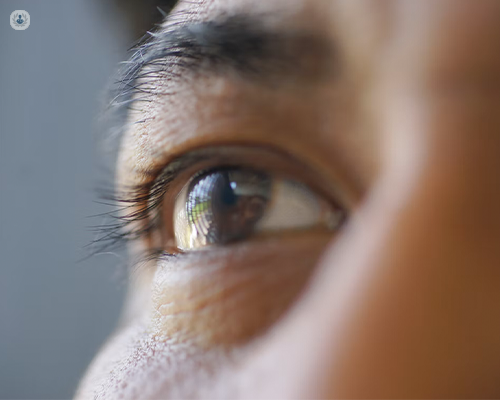What is the success rate of cataract surgery?
Written in association with:In this article below, revered consultant ophthalmic surgeon, Mr Hadi Zambarakji, details what cataract surgery is, and reveals what patients can expect following surgery.

What are cataracts?
Cataract surgery is one of the most common and successful procedures performed worldwide, offering a remarkable restoration of vision for millions of people each year. A cataract is a clouding of the eye's natural lens, leading to blurred vision and, if left untreated, blindness. The condition typically develops with age, though it can also result from injury, certain medications, or medical conditions like diabetes.
What is the main objective of cataract surgery?
The primary goal of cataract surgery is to remove the cloudy lens and replace it with a clear artificial one, known as an intraocular lens (IOL). The surgery is usually an outpatient procedure, taking about 15 to 30 minutes. It is performed under local anaesthesia, ensuring the patient remains awake but feels no pain.
What are the different types of cataract surgery?
There are two main types of cataract surgery: phacoemulsification (phaco) and extracapsular cataract extraction (ECCE). Phacoemulsification is the most commonly used method, where a small ultrasonic probe is inserted into the eye through a tiny incision. The probe breaks up the cloudy lens into small pieces, which are then suctioned out. In ECCE, a larger incision is made, and the cloudy lens is removed in one piece. Both methods involve implanting an IOL to replace the removed lens.
What can patients expect after surgery?
Post-surgery, patients can expect a significant improvement in vision, often within a few days. Full recovery usually takes a few weeks. During this period, patients are advised to avoid strenuous activities and follow a regimen of prescribed eye drops to prevent infection and reduce inflammation.
Modern advancements in cataract surgery have led to the development of various types of IOLs, such as monofocal, multifocal, and toric lenses, each designed to meet different visual needs. Monofocal lenses provide clear vision at one distance, typically far. Multifocal lenses offer clarity at multiple distances, reducing the need for glasses. Toric lenses are designed to correct astigmatism.
What is the success rate of cataract surgery?
The success rate of cataract surgery is remarkably high, with over 95% of patients experiencing improved vision. Potential complications are rare but can include infection, inflammation, and in some cases, posterior capsule opacification (PCO), which can be treated with a simple laser procedure.
Cataract surgery not only restores vision but also significantly enhances the quality of life, allowing individuals to return to their daily activities with renewed clarity and confidence. With continuous advancements in surgical techniques and lens technology, the procedure remains a beacon of hope for those affected by cataracts.


